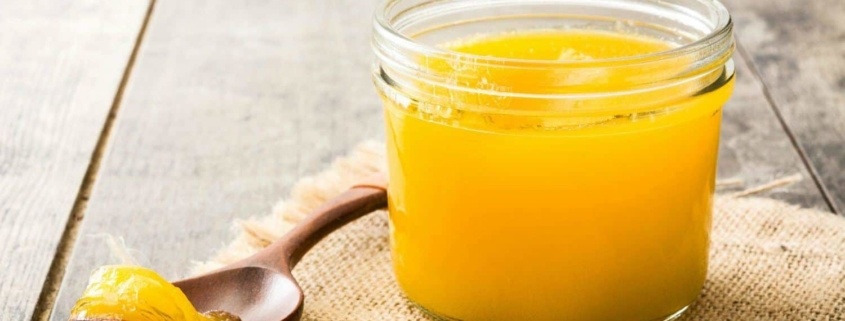How A2 Ghee is Made:
It takes 30 to 40 litres of A2 milk to make 1 kg of ghee. The reason behind this is that A2 cow milk has 87% of water and only 13% of solids includes fats and carbs which are in the form of lactose, vitamins, minerals and protein.
Now let’s talk about the Myths and the Facts about A2 Ghee.
Myth: A2 Ghee is like other Ghee.
Fact: A2 Ghee is quite different from other ghee available in the market.
How: A1 Milk and A2 milk have different proteins which makes its digestibility different. The A1 protein is a result of genetic mutation and it makes it difficult to digest, can cause irritable bowel symptoms, etc. While A2, is easy on the stomach and has a composition similar to that of mother’s milk.
Myth: A2 Ghee has fats only.
Facts: A2 Ghee is packed with nutrients.
How: A2 Ghee is fully packed with fat soluble Vitamins such as A, D, E, K and essential fatty acids like Linoleinic acid and arachidonic acid. It has carotenoids lutein, squalene, magnesium, phosphorus and calcium. All these nutrients are essential in the body and are known for their anti-ageing, anti-depressant, anti-cancer properties and keeps bone, muscle, hair, and skin healthy.
Myth: A2 Ghee can cause weight gain.
Facts: A2 Ghee helps in reduction of weight when consumed in moderate quantities.
How: A2 ghee does not contain casein, lactose, or carbohydrates, it is an ideal keto-friendly fat. Now, what keto is, it is a low carb and high fat diet which helps in weight loss and provides numerous health benefits.
Myth: A2 Ghee Can Cause Lactose Intolerance in People.
Facts: A2 Ghee is easily consumable by lactose intolerant people.
How: A2 ghee is free from both types of milk proteins i.e. casein and lactose. It doesn’t cause lactose intolerance issues. On the other hand, A1 milk can cause stomach irritability because of the protein presence in the A1 milk.
Myth: A2 Ghee Can Cause Heart Diseases.
Facts: A2 actually helps in decreasing bad cholesterol and blood sugar level of the body.
How: By keeping bad cholesterol away and blood sugar levels in control it is a good alternative for heart health and pancreas. There are lots of studies that suggest moderate consumption of A2 Ghee decreases lipids or fats in blood. It makes you feel fuller for longer hours and decreases your sugar cravings, so it definitely leads to weight loss.

 © The Gau Company. All Rights Reserved.
© The Gau Company. All Rights Reserved. © The Gau Company. All Rights Reserved.
© The Gau Company. All Rights Reserved.